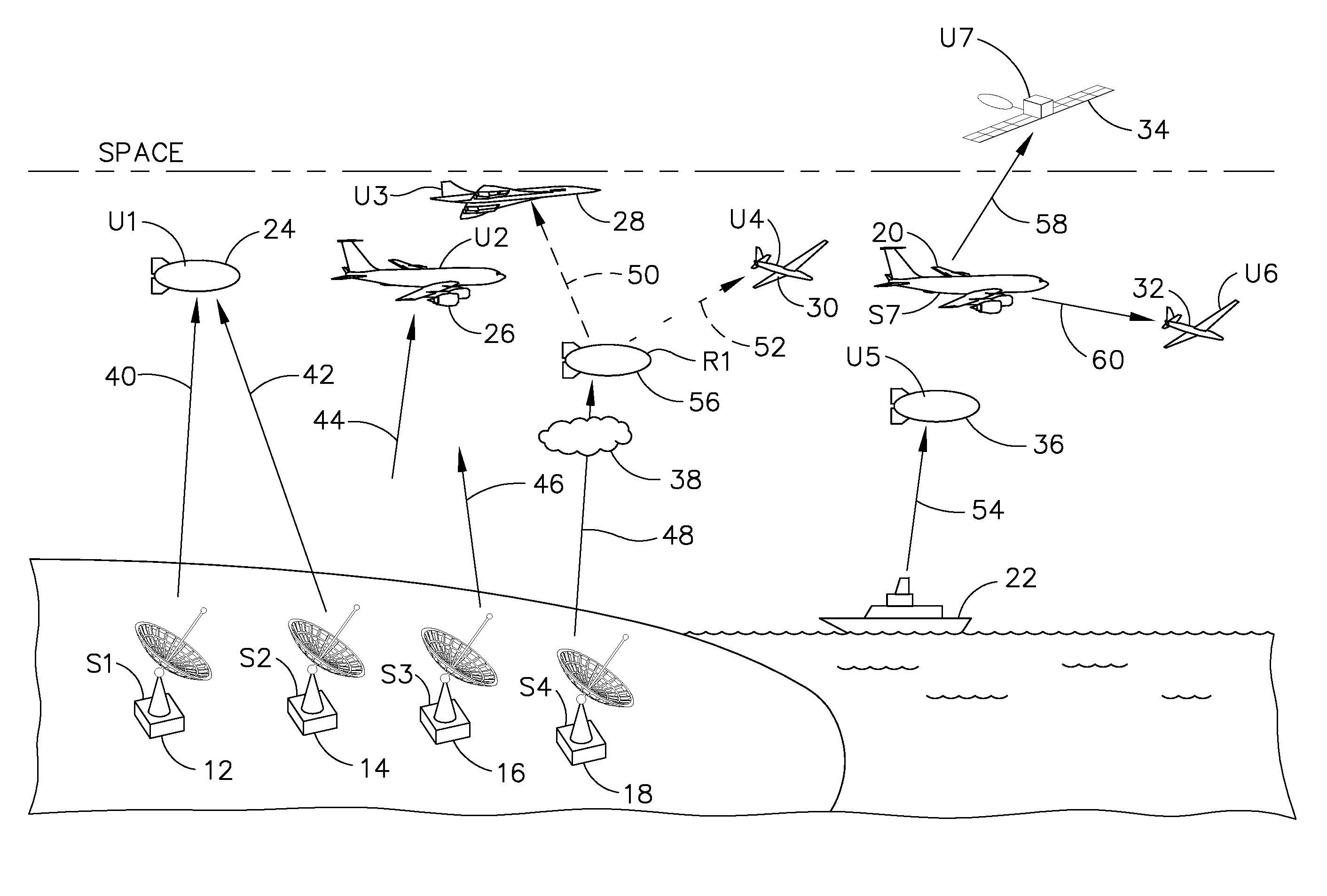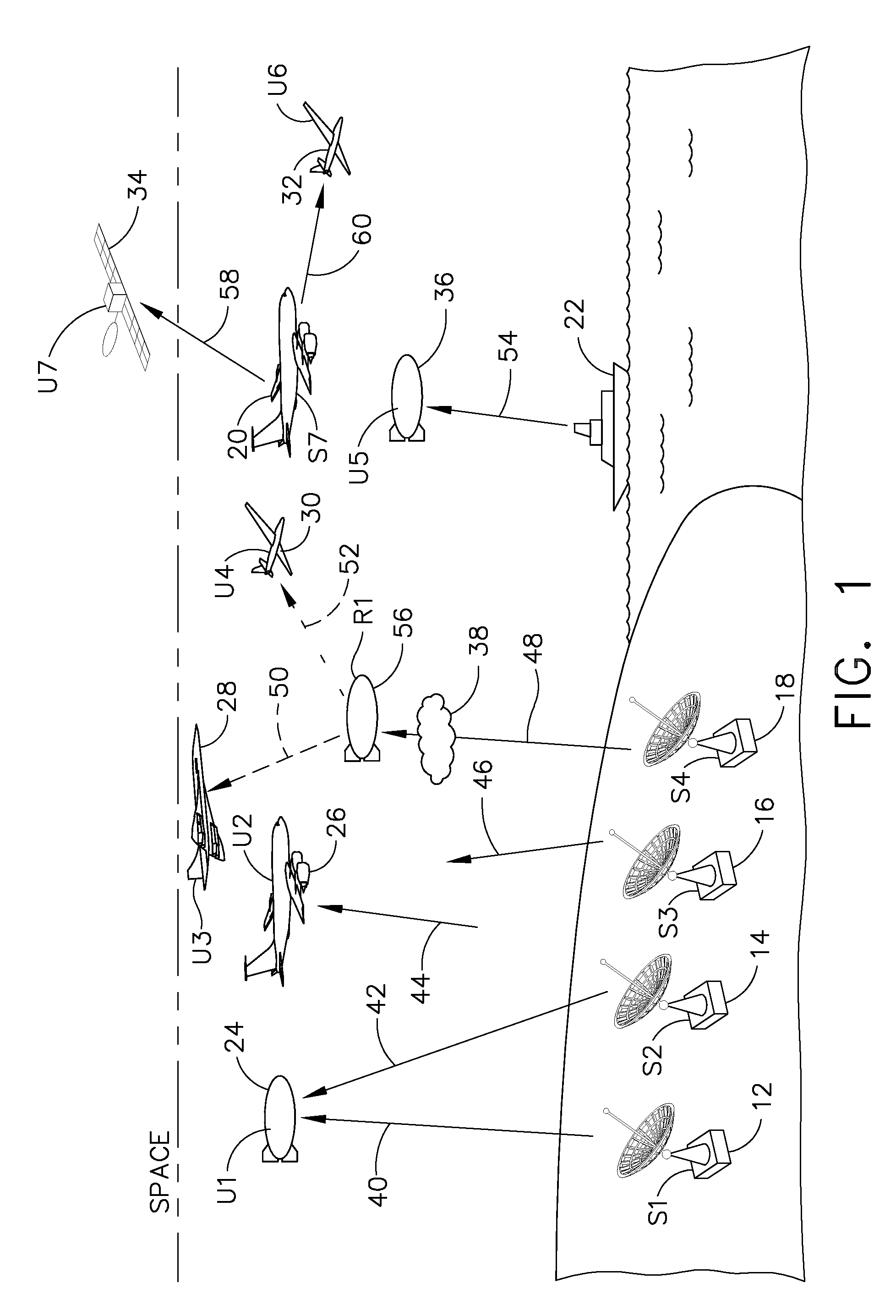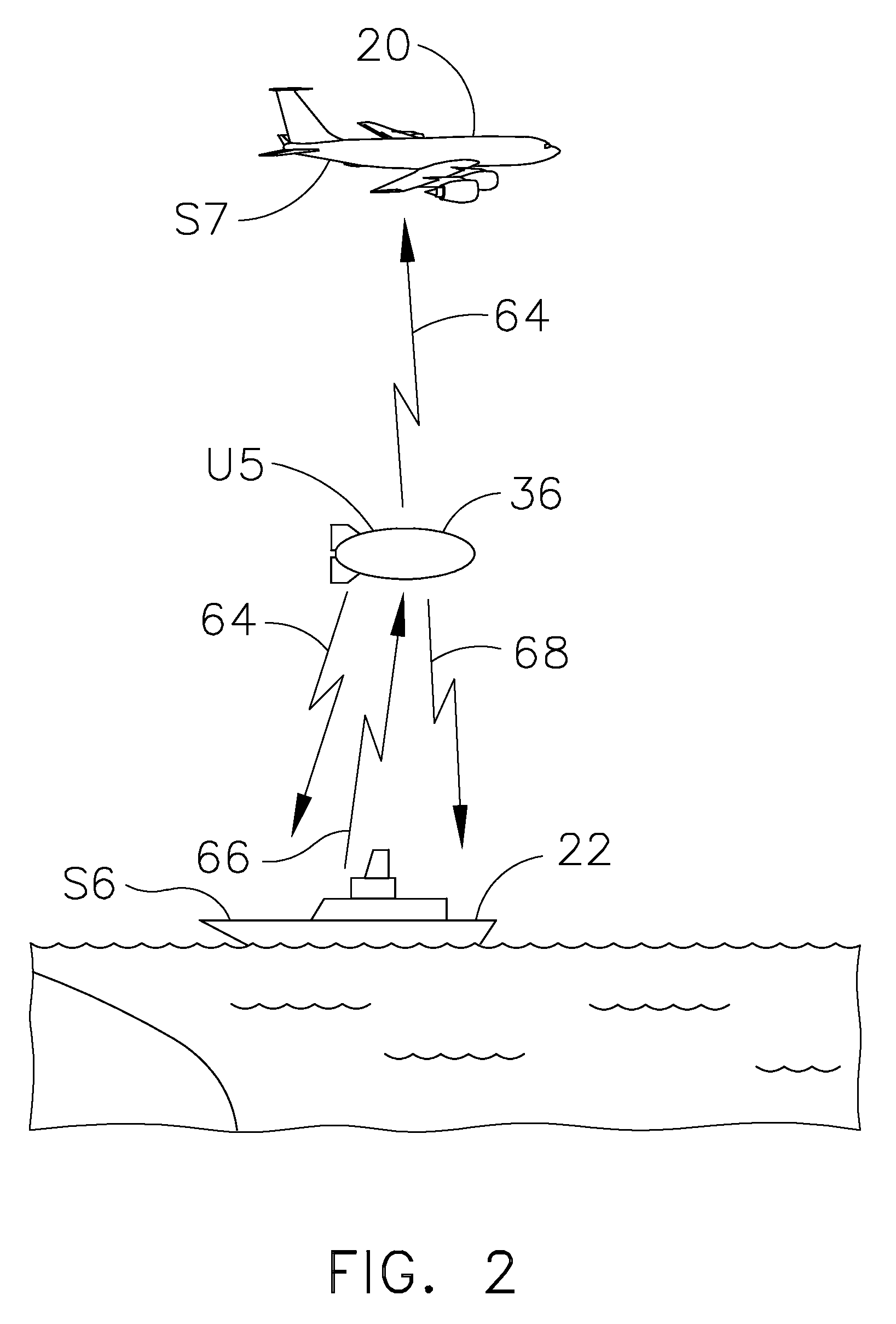Method and system for controlling a network for power beam transmission
a power beam transmission and network control technology, applied in data switching networks, frequency-division multiplexes, instruments, etc., can solve the problems of limited flight altitude of low intensity of sunlight, and limited time and distance that can be achieved by aircraft operating on combustion engines. , to achieve the effect of increasing the range of travel of a mobile user node, increasing reliability and availability, and reducing the unit size of individual beam sources in the network
- Summary
- Abstract
- Description
- Claims
- Application Information
AI Technical Summary
Benefits of technology
Problems solved by technology
Method used
Image
Examples
Embodiment Construction
[0028]Referring to FIG. 1, an exemplary system of the present invention has a plurality of source nodes 12, 14, 16, 18, 20&22. Source nodes 12-22 include fixed nodes 12, 14, 16&18 and mobile nodes 20&22, and combinations thereof. The system also has beam-powered user nodes 24, 26, 28, 30, 32, 34&36 and communication systems (not shown) for each beam-powered user node 24-34 to request power from a plurality of source nodes 12-22. The user node 24-34 specifies a set of preferably predetermined parameters, including, e.g., an acceptable time interval, and acceptable parameters relative to the power beam, e.g., the wavelength of a power beam that the user node may receive, the pulse rate of the power beam, a duty cycle, engagement geometry, size of beam, etc. The system also includes one or more relays 56 for directing power beams around airborne obstructions 38.
[0029]Each source node 12-22 is configured to specify its power delivery capability, e.g., the wavelength of its power beam, t...
PUM
 Login to View More
Login to View More Abstract
Description
Claims
Application Information
 Login to View More
Login to View More - R&D
- Intellectual Property
- Life Sciences
- Materials
- Tech Scout
- Unparalleled Data Quality
- Higher Quality Content
- 60% Fewer Hallucinations
Browse by: Latest US Patents, China's latest patents, Technical Efficacy Thesaurus, Application Domain, Technology Topic, Popular Technical Reports.
© 2025 PatSnap. All rights reserved.Legal|Privacy policy|Modern Slavery Act Transparency Statement|Sitemap|About US| Contact US: help@patsnap.com



